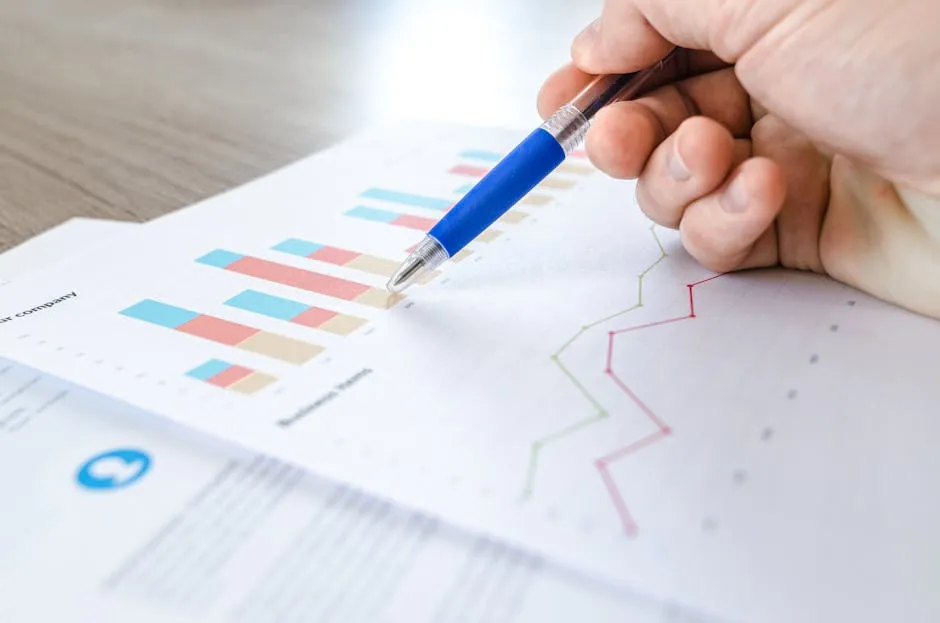Introduction
Ever wondered why some questions seem more complicated than others? The secret often lies in whether they are statistical questions or not. A statistical question is one that anticipates variability in the answers. It is a question that requires data collection and analysis. For example, asking “What is the average height of students in a class?” qualifies as statistical. In contrast, asking “How tall is John?” does not—it seeks a single, fixed answer.
Understanding statistical questions is crucial for anyone diving into data analysis or wanting to make informed decisions based on numbers. These questions help us grasp trends, make predictions, and draw insights from data. Whether you’re a student working on a project or a professional analyzing market trends, distinguishing between statistical and non-statistical questions is vital.
So, what’s the difference? Statistical questions expect a range of answers and require data collection, while non-statistical questions yield a specific answer. Throughout this article, you’ll learn how to identify statistical questions, their significance, and their real-world applications. By the end, you’ll be equipped to tackle questions like a data wizard, making sense of the numbers that shape our world.
Understanding Statistical Questions
What Are Statistical Questions?
Statistical questions are queries that anticipate variability in data. They require us to gather data from a group rather than relying on a single observation. A statistical question is often structured to ask about a population or group rather than an individual. For instance, “What is the average height of students in a class?” is statistical because it expects different heights from various students. The answer will likely be a range, not just a single number.
One key characteristic of statistical questions is that they necessitate data collection. It’s not enough to just ask; you need to gather responses from multiple sources. For example, the question “How many hours of sleep do teenagers get on average?” prompts data collection from various teenagers, yielding diverse responses. This variety is what makes statistical analysis so interesting!
Here are a couple of examples to clarify further:
- “What is the average height of students in a class?”
- “How many hours of sleep do teenagers get on average?”
Both questions expect different answers because they involve various individuals. They require data collection to analyze and derive meaningful insights.
In contrast, a question like “What is the height of Sarah?” is not statistical. It has a single answer that does not vary. Understanding this distinction is essential in data analysis and research.
Remember, the magic of statistical questions lies in their ability to capture the diversity of experiences and perspectives. Whether in education, business, or healthcare, these questions unlock insights that help us make better decisions and understand the world around us. So, let’s keep our eyes peeled for more statistical questions as we continue this journey!

Key Features of Statistical Questions
Statistical questions are unique because they anticipate variability in the answers. Unlike straightforward queries, they expect answers to vary significantly. For instance, asking, “What is the average height of students in a class?” implies a range of heights. Each student contributes a different answer, showcasing diversity in data.
The necessity of data collection plays a vital role in statistical questions. You can’t just pull answers out of thin air! For example, to answer “How many hours of sleep do teenagers get on average?” you must gather data from multiple teenagers. This process ensures a comprehensive understanding of the topic at hand.
Lastly, statistical questions have the potential for deep analysis. They allow researchers to evaluate trends and derive insights from collected data. For instance, when investigating “What percentage of students prefer online classes?” the results can lead to broader conclusions about educational preferences. This ability to analyze and interpret data is what makes statistical questions so valuable in various fields, from education to business.
In summary, statistical questions are distinguished by their anticipation of variability, their requirement for data collection, and their capacity for insightful analysis. Understanding these key features can elevate your data analysis skills and enhance your decision-making abilities. So, keep your eyes peeled for those statistical gems!
If you’re diving into the world of statistics, having the right tools is essential. Consider investing in Statistical Analysis Software to streamline your data collection and analysis process. It’s like having a personal assistant for your data needs!

Comparative Analysis
When it comes to statistical questions, distinguishing them from non-statistical ones is crucial. Let’s break it down in a comparison table:
| Statistical Questions | Non-Statistical Questions |
|---|---|
| How many hours do students study each week? | What is the capital of France? |
| What is the average height of students in a class? | How old is my neighbor? |
| How many customers plan to use coupons when shopping? | How many siblings do I have? |
| What percentage of teens prefer online classes? | What is 2 + 2? |
| How frequently do people exercise in a month? | What time does the sun set today? |
Statistical questions are designed to collect data that varies across responses. They expect a range of answers, making them vital in research and analysis. Non-statistical questions, however, yield fixed answers with no variability.
In the real world, both question types have applications. Statistical questions help businesses gauge customer preferences through surveys. For instance, a coffee shop might ask, “How many cups of coffee do you drink weekly?” This question gathers diverse data, allowing the shop to adjust its offerings based on customer habits.
On the other hand, non-statistical questions come into play in everyday situations. For example, “What is the temperature in New York today?” gives a specific answer, providing immediate information without the need for variability.
The significance of using statistical questions in research cannot be overstated. They allow researchers to identify trends, make predictions, and develop insights that drive decision-making. For example, a health study might ask, “What is the average recovery time for patients after surgery?” This question requires data collection from multiple patients, leading to a comprehensive understanding of recovery patterns.
In sum, while non-statistical questions serve their purpose in providing straightforward answers, statistical questions offer depth and variability, making them essential for informed analysis and decision-making in a data-driven world.

Real-Life Applications of Statistical Questions
In Business
Businesses heavily rely on statistical questions to analyze customer behavior and make informed decisions. These questions allow companies to understand trends, preferences, and market dynamics. For instance, market research surveys often pose statistical questions to gather insights. A common question might be, “How likely are you to recommend our product to a friend?”
This question expects a range of responses, allowing the business to gauge overall customer satisfaction. The variety in answers helps the company identify areas for improvement or confirm that their product meets customer needs.
Another example is during product launches. A company might ask, “What features do you value most in our new smartphone?” Responses can vary widely, guiding the company on which features to emphasize in their marketing strategy.
Statistical questions also play a crucial role in understanding customer demographics. For instance, a restaurant might survey, “What age group do you belong to?” This question helps the restaurant tailor its menu and marketing efforts to attract specific age demographics, enhancing customer engagement.
In summary, statistical questions empower businesses to make data-driven decisions, ultimately leading to better customer experiences and increased profitability. They transform raw data into actionable insights, paving the way for strategic growth in competitive markets.

If you’re looking to deepen your understanding of data analysis in business, consider checking out Data Science for Business: What You Need to Know about Data Mining and Data-Analytic Thinking. It’s a great resource for understanding how data can drive business success!
In Healthcare
Healthcare professionals heavily rely on statistical questions to investigate disease patterns and the effectiveness of treatments. Why? Because the world of medicine is anything but static. It’s dynamic, full of variability, and that’s where statistics come into play.
For instance, consider a study examining patient recovery times after a particular surgery. A statistical question like “What is the average recovery time for patients undergoing knee surgery?” leads to collecting data from numerous patients. Each recovery journey varies. Some patients bounce back in a week, while others may take months. Analyzing this data helps healthcare providers understand what typical recovery looks like and identify factors that might influence it.
Another compelling example involves medication side effects. A common statistical inquiry might be, “What percentage of patients experience side effects from drug X?” In this case, healthcare researchers gather data from a diverse group of patients taking the medication. The results vary, with some patients experiencing no side effects, while others might face mild to severe reactions. This variability is crucial. It guides doctors in informing patients about potential risks and benefits.
Moreover, statistical questions aren’t just limited to recovery times or side effects. They extend to understanding disease prevalence. For example, “What is the incidence rate of diabetes among adults in the U.S.?” This question requires comprehensive data collection from various populations, leading to critical insights that influence public health policies.
By employing statistical questions, healthcare professionals can better tailor treatments, improve patient outcomes, and allocate resources effectively. In the ever-evolving landscape of healthcare, these inquiries form the backbone of evidence-based practice, ensuring that decisions are grounded in solid data rather than guesswork.

Practice Identifying Statistical Questions
Exercises
Ready to test your skills in identifying statistical questions? Below are a series of statements and questions. Your task is to classify each one as either statistical or non-statistical. Justify your reasoning for each classification!
- How many hours do students study each week?
- *Statistical*: This question anticipates variability in study hours.
- What is the favorite color of the students in your class?
- *Statistical*: This question expects a variety of answers from different students.
- How tall is your friend?
- *Non-statistical*: Seeking a specific answer with no variability.
- What percentage of social media users post daily?
- *Statistical*: This involves collecting data from a sample of users, revealing variability.
- How many pets does your neighbor have?
- *Non-statistical*: This question has a definite answer with no variability.
- What is the average temperature in your city during summer?
- *Statistical*: This requires data collection over time, expecting a range of temperatures.
- How many siblings do you have?
- *Non-statistical*: This is a fixed question with a singular answer.
- What are the most common reasons for students to skip classes?
- *Statistical*: This question anticipates various responses based on student experiences.
- How much time do you spend on social media daily?
- *Statistical*: This inquiry expects a range of responses from different individuals.
- Is it raining today?
- *Non-statistical*: This question can only be answered with a yes or no, lacking variability.
Now, take a moment to think about your classifications. Why did you choose statistical or non-statistical? Reflecting on your reasoning will help you sharpen your skills in identifying statistical inquiries. Remember, statistical questions are all about variability and the need for data collection. Happy analyzing!

Summary of Key Learnings
Understanding statistical questions is essential. They help us analyze data and draw insights. By grasping these concepts, we can make informed decisions in various fields.
Statistical questions differ significantly from non-statistical ones. The former anticipates variability in answers, while the latter seeks a definitive response. For example, “What is the average height of students in a class?” expects a range of heights. Conversely, “What is the height of Sarah?” yields a single answer with no variability.
Data collection plays a pivotal role in answering statistical questions. Gathering information from a group allows for comprehensive analysis. This variability in responses is what makes statistical questions fascinating. For instance, when asking, “How many hours do teenagers sleep on average?” we must collect data from multiple teenagers. This diverse data set leads to better insights and conclusions.
Variability is a core aspect of statistical questions. It highlights the differences in responses, making the analysis richer. By recognizing this variability, we can better understand trends and patterns in data. This understanding is vital for researchers, businesses, and decision-makers alike.
In summary, grasping the significance of statistical questions enhances our analytical skills. Recognizing the differences between statistical and non-statistical questions is crucial. Emphasizing data collection and variability is key to answering these questions effectively. As you continue your journey into the world of statistics, remember: the beauty lies in the variety!

Conclusion
In conclusion, we have unraveled the essential components of statistical questions. These inquiries are not just about numbers; they’re about understanding variability and drawing meaningful conclusions. Whether in business, healthcare, or everyday life, statistical questions guide our decision-making processes.
Statistical questions play a vital role in data analysis. They allow us to gather insights that would otherwise remain hidden. By anticipating variability in responses, these questions lead us to richer, more nuanced interpretations of data. This is especially important when making informed decisions based on trends and patterns.
We encourage you to practice identifying and formulating statistical questions in your daily life. Challenge yourself to ask questions that require data collection and analysis. Whether you’re curious about social media usage among your friends or the average time spent on homework, these inquiries can lead to fascinating discoveries.
Embrace the world of statistical questions! The more you engage with them, the better equipped you’ll be to navigate the sea of data that surrounds us. Remember, each question you ask can open up a new avenue for understanding and insight. So go ahead, become a statistical sleuth and unveil the stories hidden within the numbers!

FAQs
What is a simple definition of a statistical question?
A statistical question anticipates a variety of answers and requires data collection and analysis.
Can a statistical question have a numerical answer?
Yes, but it typically seeks a range or average rather than a single fixed answer.
How do statistical questions relate to real-life scenarios?
Statistical questions are essential in fields like market research and public health, where understanding data variability is crucial.
Why is it important to differentiate between statistical and non-statistical questions?
Understanding the difference aids in effective data collection and analysis, allowing for more informed conclusions and decisions.
Please let us know what you think about our content by leaving a comment down below!
Thank you for reading till here 🙂
For a deeper understanding of statistical questions, check out this comprehensive guide on statistical questions in basketball.
Understanding the differences between practical significance and statistical significance is crucial for data analysis; learn more about it here.
Also, if you’re looking for a great read on statistics, check out Statistics For Dummies. It’s packed with information that can help you navigate the world of statistics with ease!
And let’s not forget the importance of data visualization. You might want to grab a copy of The Visual Display of Quantitative Information. It will help you make your data presentations pop!
For those who want to get hands-on with data, consider R for Data Science. It’s a fantastic resource for anyone looking to dive into data manipulation and visualization!
Lastly, if you’re into Python, don’t miss Python for Data Analysis. This book is your gateway to mastering data analysis with Python!
All images from Pexels




